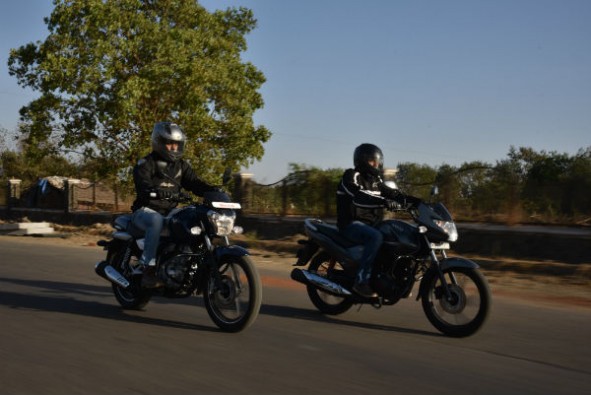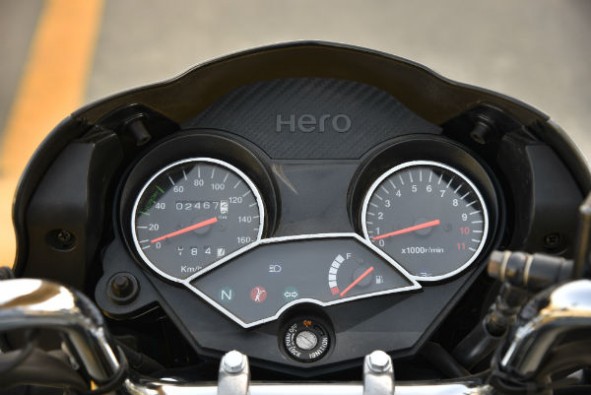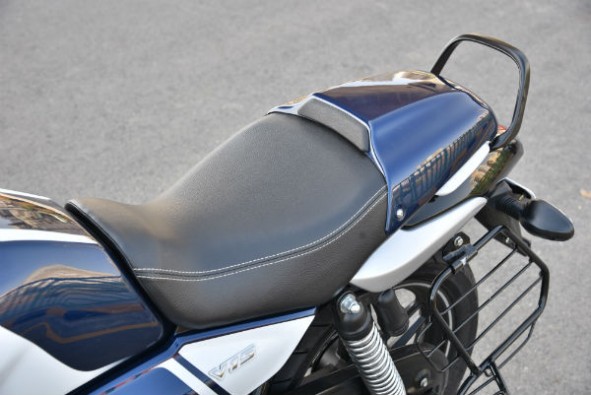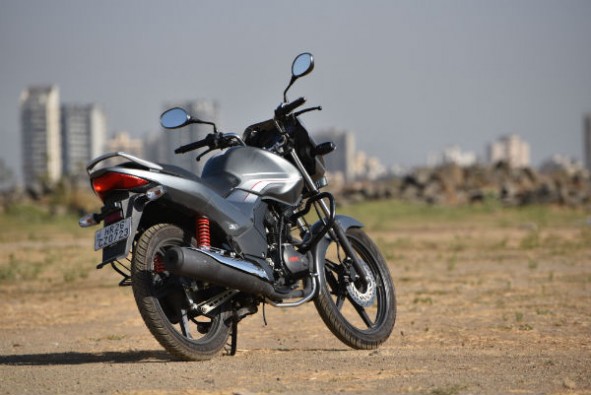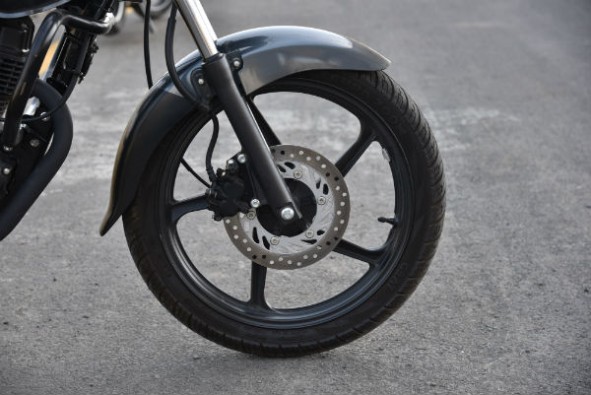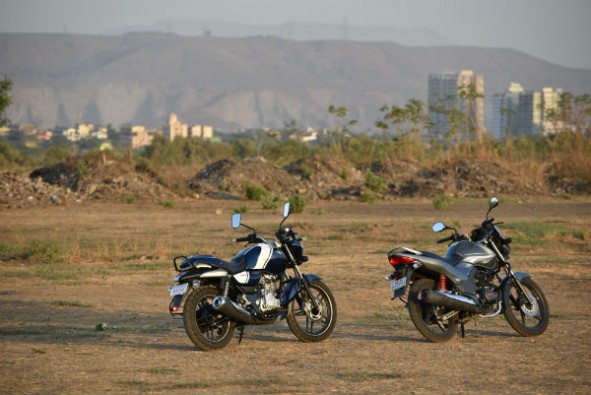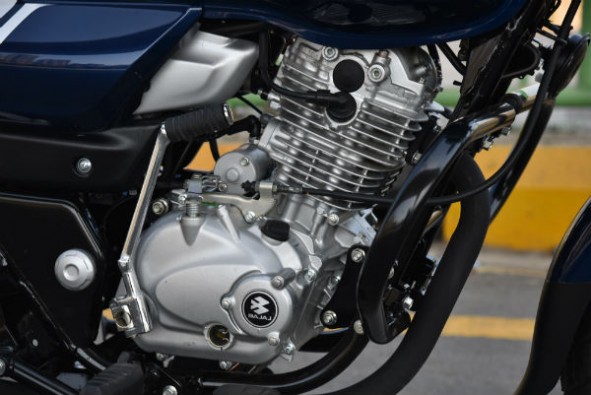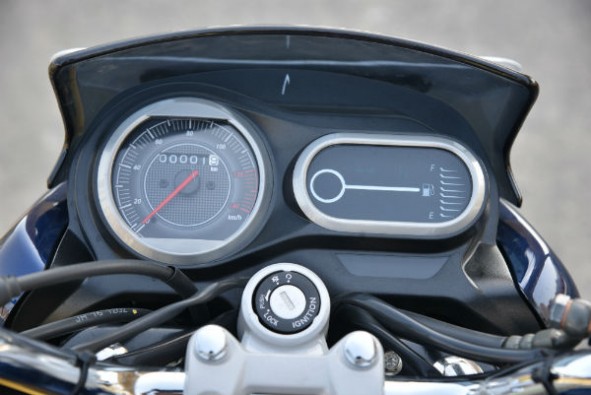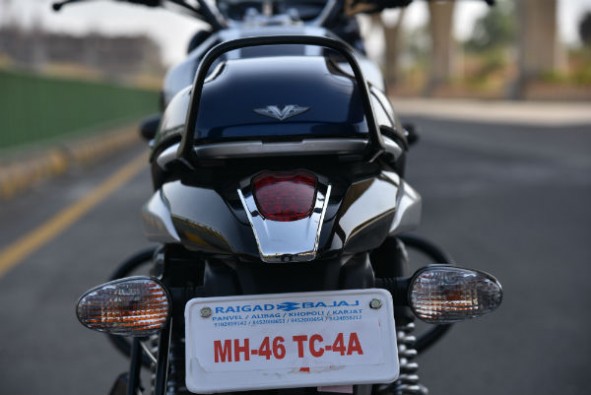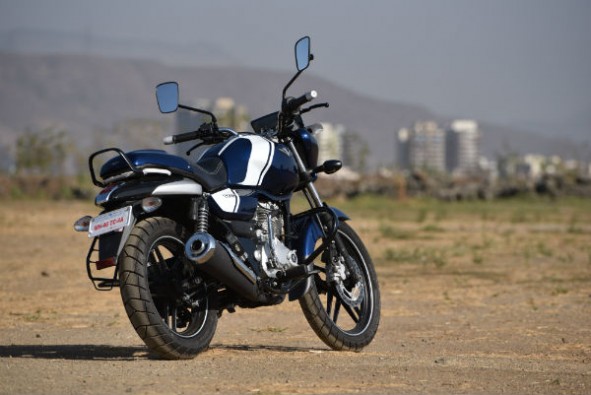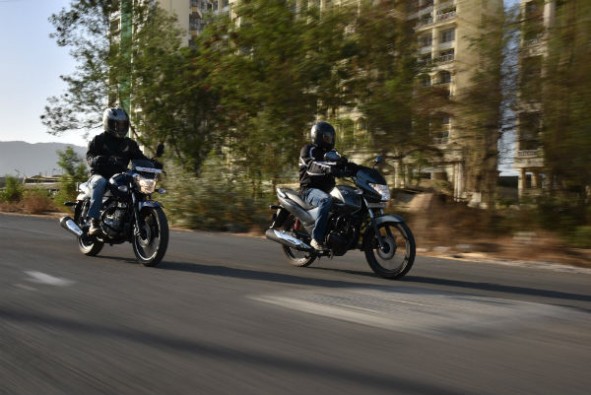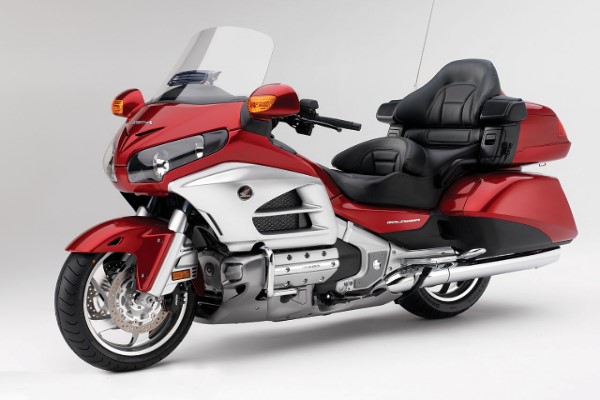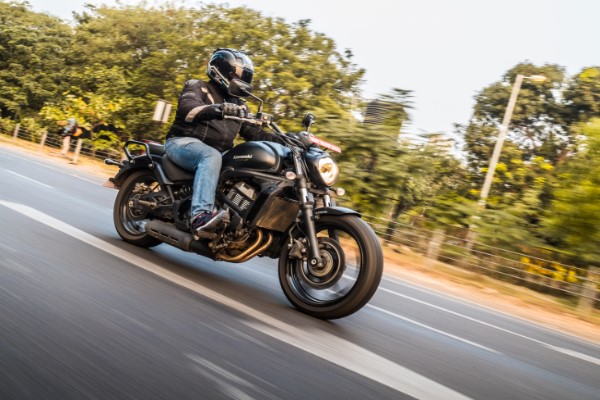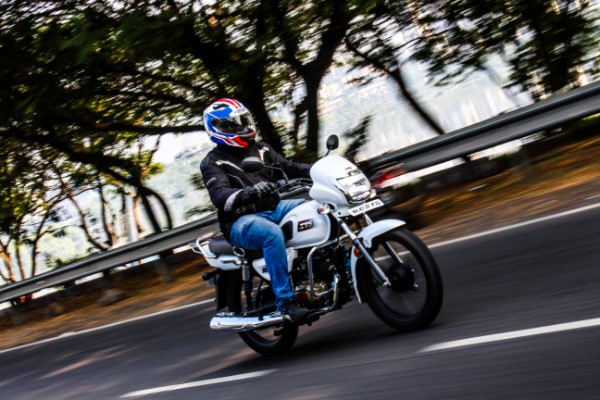This segment requires bikes to be comfortable, capable of dealing with potholed roads, neutral from a riding position perspective, fuel efficient, affordable to own and run, and easy to navigate through urban sprawl. Speed and acceleration are not priorities.
On the outside
The Achiever 150 looks like a true-blue commuter. It’s well-designed, but it will not stand out in a sea of commuter motorcycles. The V15, on the other hand, looks premium. It brings a freshness that was much needed in this segment.
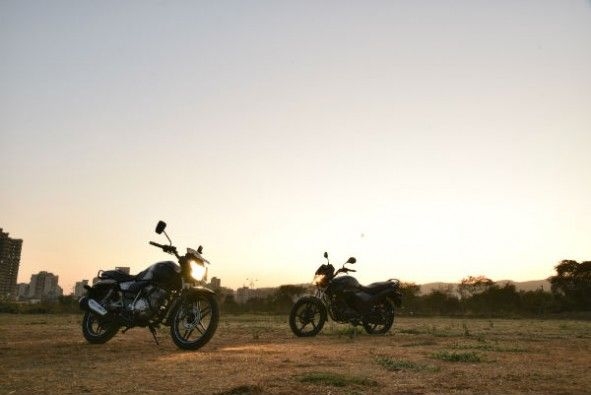
The tank, side panels, seat and tail segment are all very different from what we’ve come to expect from commuter motorcycles. The café-racer-like rear seat cover, the LED tail-light and the muscle lines on the tank are great. The butterfly-shaped headlight is also distinctive. And then, there is the bike’s connection with INS Vikrant, the decommissioned Majestic-class aircraft carrier of the Indian Navy. Every V15 uses a bit of the INS Vikrant’s metal in its making, which is one of its greatest selling points. The V15 is much more desirable and stands out more than the Achiever 150.
Power Torque
The Achiever 150’s engine is a 149.1cc unit that produces 13.6hp at 8,000rpm and 12.8Nm at 5,000rpm, whereas the V15’s 149.5cc motor produces 12hp at 7,500rpm and 12.7Nm at 5,500rpm.
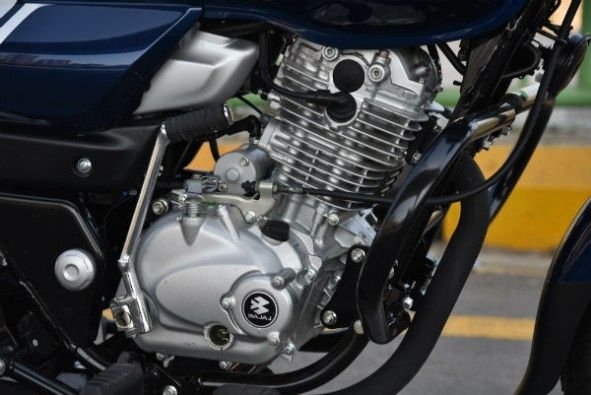
The Achiever feels like a commuter bike the moment you get into the saddle. The riding position is very upright, which will prove comfortable even for extended city commutes. There’s a light vibration at idle when you start the bike. Slot into first using the light clutch and, as you set off, some things become immediately obvious - the engine is torquey and not very refined, and is certainly not happy to be revved too much. You need to upshift quite often. Highway cruising, thus, is not a great option. While the Bajaj definitely does feel torquey, it is slower than the Achiever in a head-to-head acceleration test. But the way it delivers power is more enjoyable - it is more linear and the engine will rev more freely and smoothly. The V15 feels more comfortable at high revs, allowing you to space out your upshifts more; downshifts too can be spaced out because like the Achiever. However, vibrations in the V15 are even more pronounced at idle than in the Achiever. The V15 is slightly cruiser-like, with wide handlebars, a low-set wide seat and forward-set foot pegs. It is comfortable for both urban as well as highway riding.
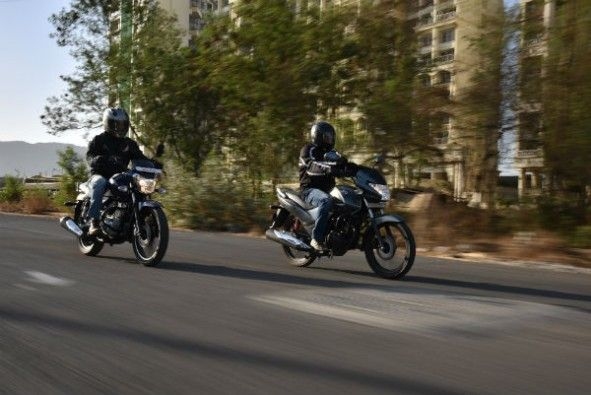
From the saddle
Both bikes have a soft ride, they are urban commuters after all. The Achiever’s is the softer of the two. It is superbly absorbent at low speeds, but bouncy at higher ones. The relatively firmer suspension of the V15 is soft enough to tackle bumps, lumps and crests well, but also firm enough to do away with undulations on the highway. In terms of handling, both bikes were easy to navigate in traffic. The V15 was a little more adept at taking corners though, probably due to its lower concentration of weight and fatter rear tyre.
Both bikes get 13-litre fuel tanks, though the Achiever’s reserve at 1.8 litres is slightly more than the V15’s 1.7 litres. The Achiever uses Hero’s i3S (Idle Start-stop System) technology to improve fuel economy – with i3S switched on, the bike automatically shuts the engine down after five seconds of idling. Pull in the clutch and it comes back to life again. However, the V15 delivered a better city fuel efficiency at 56kpl, compared to the Achiever’s 50kpl.
The Achiever comes out on top in terms of equipment - it gets a side-stand indicator, tachometer and i3S. The only novelty the V15 enjoys is the LED tail-lamp. However, the quality of the switchgear feels better on the Bajaj. Both bikes get the Automatic Headlamp On (AHO) feature, though the Bajaj has the brighter lamp.
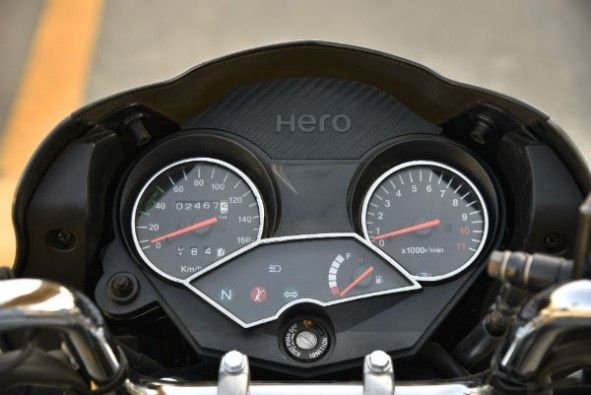
And the winner is....
The Achiever 150 is the faster bike here, and its i3S tech is handy. But on all other fronts, the V15 comes out on top. It is smoother, more comfortable, and offers better riding and handling. More importantly, it is desirable. It looks and feels a lot more premium than its price tag suggests.
